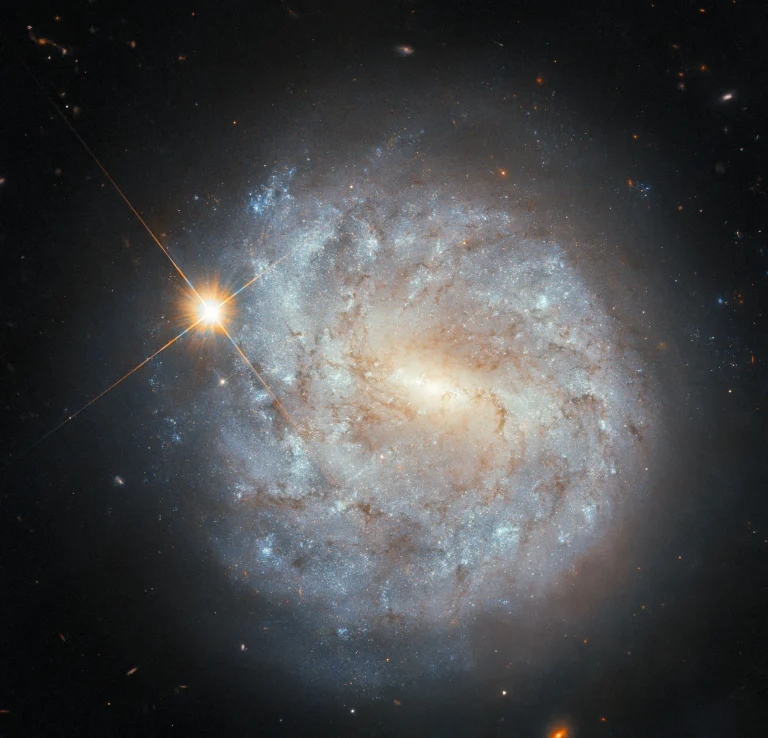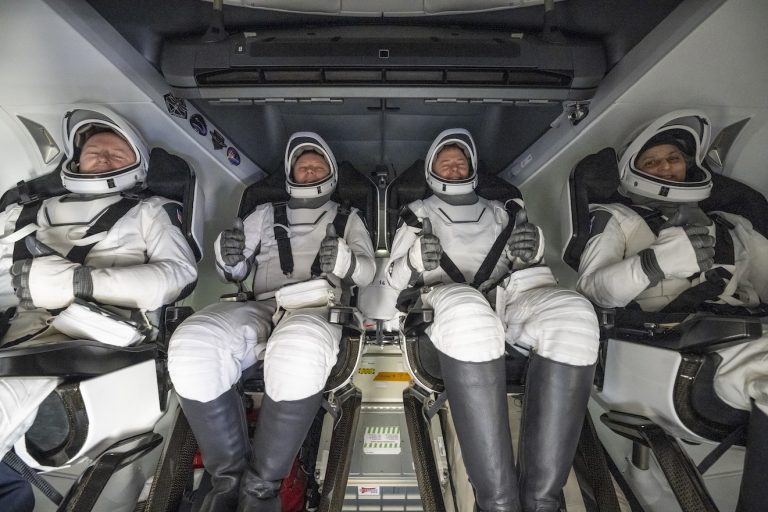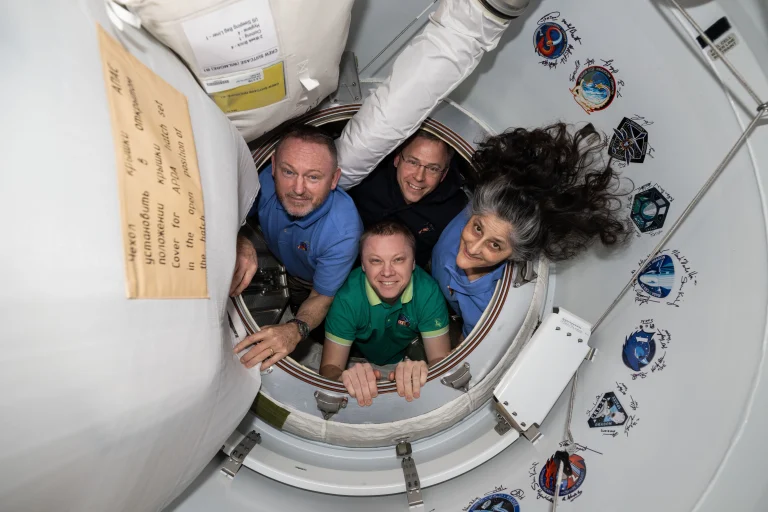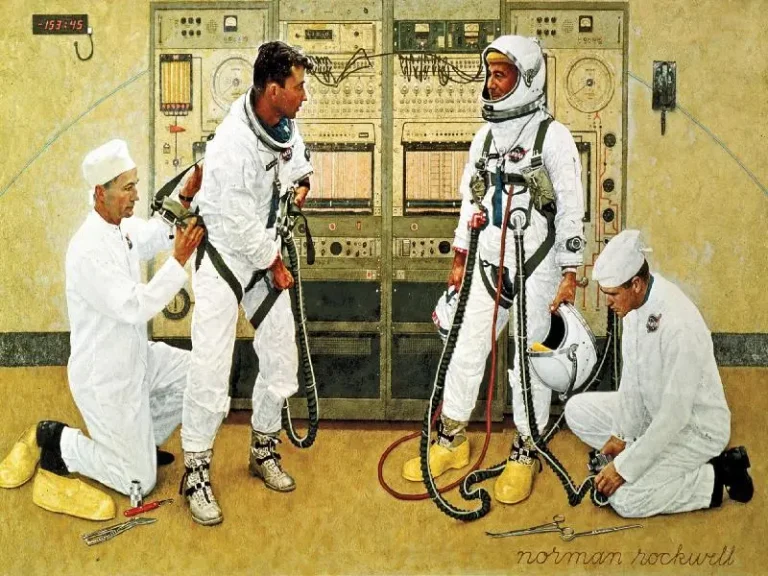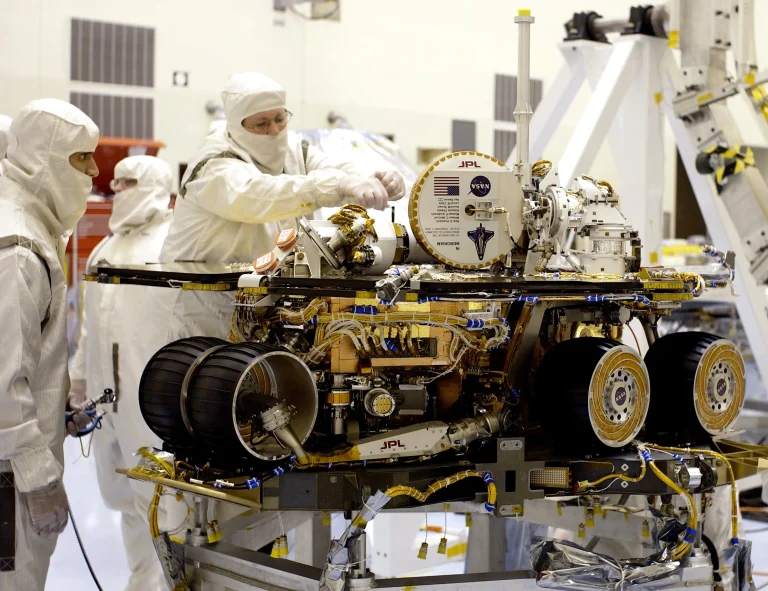Interior of the 20-foot diameter vacuum tank at the NASA Lewis Research Center’s Electric Propulsion Laboratory.
The Electric Propulsion Laboratory, which began operation in 1961, contained two large vacuum tanks capable of simulating a space environment. The tanks were designed especially for testing ion and plasma thrusters and spacecraft. The larger 25-foot diameter tank included a 10-foot diameter test compartment to test electric thrusters with condensable propellants. The portals along the chamber floor lead to the massive exhauster equipment that pumped out the air to simulate the low pressures found in space.
Lewis researchers had been studying different electric rocket propulsion methods since the mid-1950s. Harold Kaufman created the first successful ion engine, the electron bombardment ion engine, in the early 1960s. These engines used electric power to create and accelerate small particles of propellant material to high exhaust velocities. Electric engines have a very small thrust, but can operate for long periods of time. The ion engines are often clustered together to provide higher levels of thrust.
NASA
NASA刘易斯研究中心电力推进实验室直径20英尺的真空罐内部。
电力推进实验室于1961年开始运行,其中有两个能够模拟太空环境的大型真空罐。这些真空罐是专门为测试离子和等离子推进器以及航天器而设计。直径为25英尺的大型水箱包括一个直径为10英尺的测试舱,用于测试使用可冷凝推进剂的电动推进器。试验室地板上的入口通向巨大的排气设备,该设备抽出空气以模拟太空中的低压。
自20世纪50年代中期以来,刘易斯研究人员一直在研究不同的电动火箭推进方法。哈罗德·考夫曼(Harold Kaufman)在20世纪60年代早期成功地制造了第一台离子发动机——电子轰击离子发动机。这些发动机利用电力产生并加速推进剂材料的小颗粒,使其达到较高的排气速度。电动发动机的推力很小,但可以长时间运行。离子发动机通常集中在一起,以提供更强的推力。
影像来源: NASA



